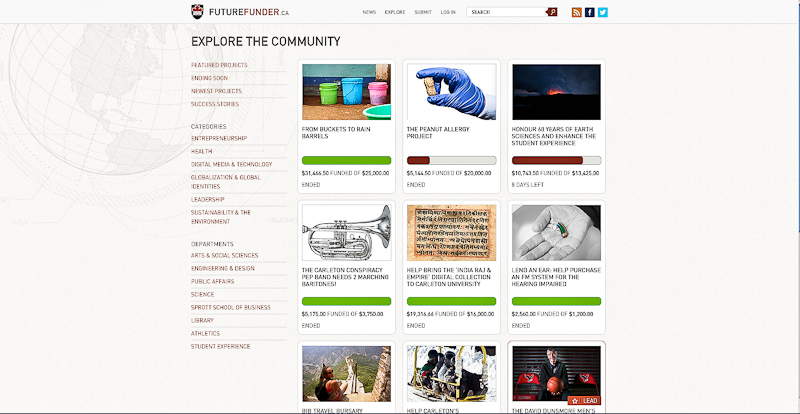Those looking to get a project financed at Carleton can use FutureFunder, a service that crowdsources donations from sponsors in the community.
Students, staff, alumni, and retirees of the university can pitch a project to FutureFunder. If staff choose to accept the proposal, they post it on the service’s website. Most projects set fundraising goals of $1,000 to $25,000.
Since its launch two years ago, FutureFunder has been a success, said Pia Chin, communications officer at the Department of University Advancement.
Thirty per cent to 50 per cent of projects promoted through the service reach or exceed their fundraising goals. More than 40 projects have appeared on the site, raising more than $1 million in total funding.
Anyone can donate to a cause, but typically sponsors are drawn to projects they find meaningful, Chin said.
“You have familiarity with the person who is fundraising, you believe in their cause, and you can see what the outcomes are. I think things like that are what lead a project to be successful,” she said.
Projects should be specific and tangible, she said, if the project hopes to be successful. Ravens Racing, for example, raised $10,000—exceeding its goal of $6,000—to design, build, and enter racecars in competition.
Current projects include a drive for an accessible workout machine and a Heritage Symposium.
The Sprott School of Business and the Carleton Faculty of Engineering and Design are collaborating on phase two of their project “From Buckets to Rain Barrels.”
Phase one involved 22 students raising $25,000 for a trip to Tanzania to research water harvesting and storage solutions.
They have since designed water collection solutions. $15,000 of the donations will pay for the students involved to go back to the country to install their designs.
Fundraising for the second phase has been very different from the first phase, according to Troy Anderson, assistant professor at Sprott and one of the project’s leaders.
After the team created their proposal and submitted it, the project was out of their hands as they waited for funding, Anderson said.
“All we could do was watch the little bar go up, very slowly,” he said.
Phase two is more interactive, with students posting updates and photos so sponsors can respond with messages.
“This term there’s a feeling of more control and involvement in the process of the campaign, as opposed to just throwing it out there and hoping it works,” Anderson said.






